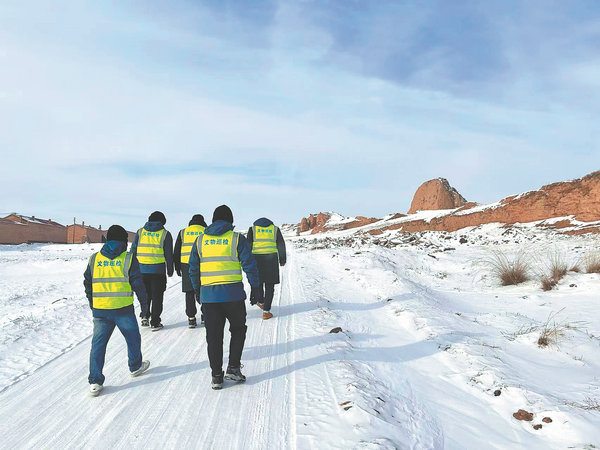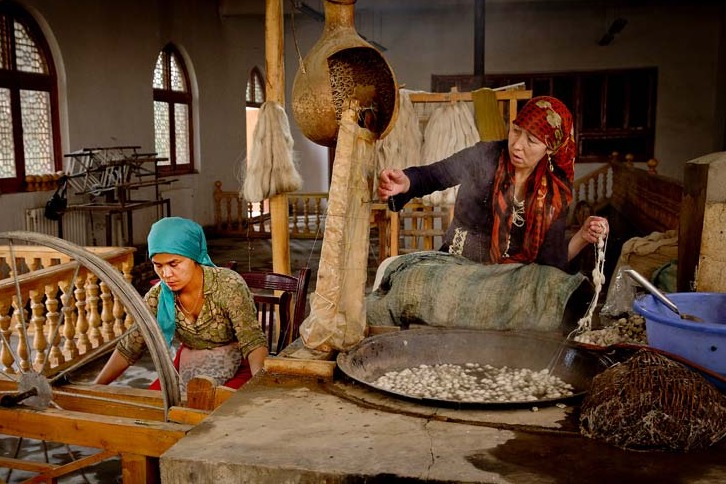Protectors give relics 'eyes and ears'
Human grit and new tech prevent theft and help maintain culturally important structures and items, report Wang Qian and Zhu Xingxin in Taiyuan.


Yet, no algorithm can replace human determination in rugged terrain where roads no longer exist.
For patrol members like Wang Kai, missions often demand extraordinary perseverance. The 40-year-old insists that no sensor can ever replace human sight.
Last year, Wang's team faced their toughest challenge at Baifotang Temple — a Ming Dynasty (1368-1644) structure abandoned in Dingxiang county's mountainous Jicheng village after residents relocated.
Situated at an altitude of nearly 1,300 meters in a valley with significant elevation differences, it is challenging to reach the stone-carved structure designed to resemble the appearance of wooden architecture. During the rainy and snowy seasons, the route is almost inaccessible.
For Wang, the trek was a battle: a 2-hour slog through rugged terrain under scorching sun, leaving team members suffering from heatstroke. What they found was heartbreaking: crumbling walls inviting thieves, rotting beams at risk of fire, and wilderness reclaiming the courtyard.
"The entire stone hall, along with its associated artifacts, including 104 stone carvings of various sizes, were exposed to the elements, posing a security risk," Wang recalls, adding for fire prevention, the fire-fighting equipment was inadequate, and the surrounding area was overgrown with weeds, with grass growing on the roof, creating a fire hazard.
"Standing there, we heard the temple crying for help," Wang says.
There are now smoke detectors and intrusion and anti-theft alarms installed at the entrance gate of the temple, as well as temperature and humidity sensing indoors. An environmental monitoring system was set up to cover the entire premises.
"If there is any unusual activity indoors, our security platform will provide feedback and alerts. This serves as a technical support feature on the security platform," Wang says, adding that technology helps turn "lack of protection" into "round-the-clock guardianship".
Over the past two years, there have been eight "health reports "about the temple to provide guidance on maintenance and preservation for the local authorities.





































